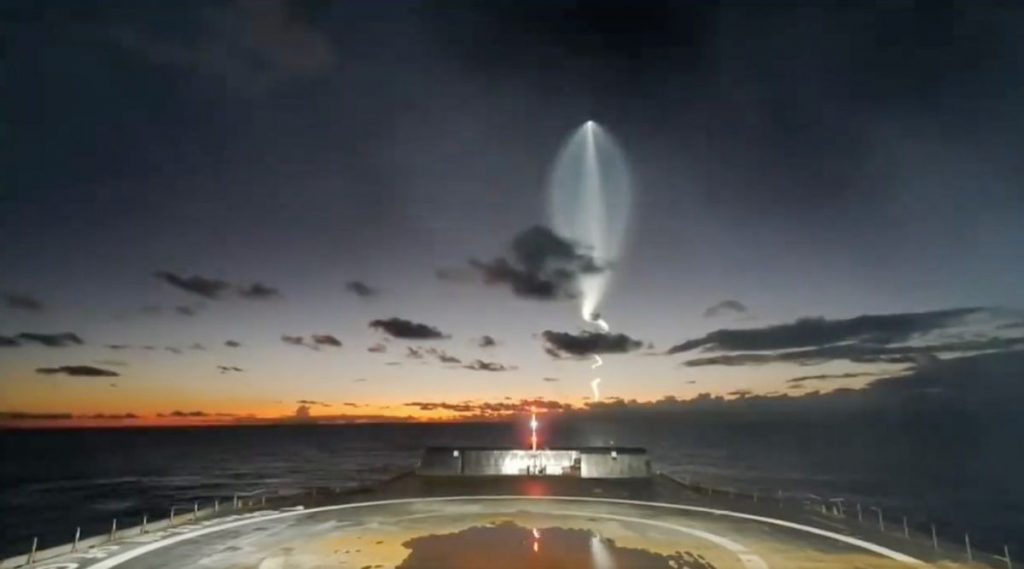One of SpaceX’s recent Falcon 9 missions delivered a treat for skywatchers when the launch created a jaw-dropping “jellyfish” in the sky.
The Falcon 9 rocket launched from Florida’s Cape Canaveral Space Force Station on Oct. 8, carrying Intelsat’s Galaxy 33 and Galaxy 34 satellites to orbit. The launch took place soon after sunset, meaning the sun illuminated the crystalized exhaust plume from the launch, resulting in spectacular imagery in the early night sky.
A great view of the jellyfish was captured by SpaceX‘s A Shortfall of Gravitas droneship, which also received the Falcon 9’s returning first stage, which landed about 8.5 minutes after launch.
Related: 8 ways that SpaceX has transformed spaceflight
Managed to see the jellyfish from Bermuda pic.twitter.com/oHVYnHSxILOctober 8, 2022
The launch was the record-tying 14th for this particular Falcon 9 first stage, but the views of the glowing twilight halo don’t get old.
The event was also captured by observers thankfully more distant from the launch and landing, including some who caught the sunlit plumes but without the full jellyfish phenomena.
Shadows from Falcon9 rained down on the #SpaceCoast this evening as the rocket and its plume were high enough that the setting sun was still shining. pic.twitter.com/GSBgCpWHW0October 9, 2022
Video shot with my iPhone from 13 miles away. It takes about a minute for the sound to arrive and the sun to light up the plume. #SpaceX #Galaxy 33 and 34. pic.twitter.com/ickFowR9miOctober 8, 2022
A Falcon 9 could be in action again at Cape Canaveral Space Force Station as soon as Friday night (Oct. 14), but the timing of that coming launch won’t be conducive to more sky jellyfish.
Follow us on Twitter @Spacedotcom (opens in new tab) or on Facebook (opens in new tab).

